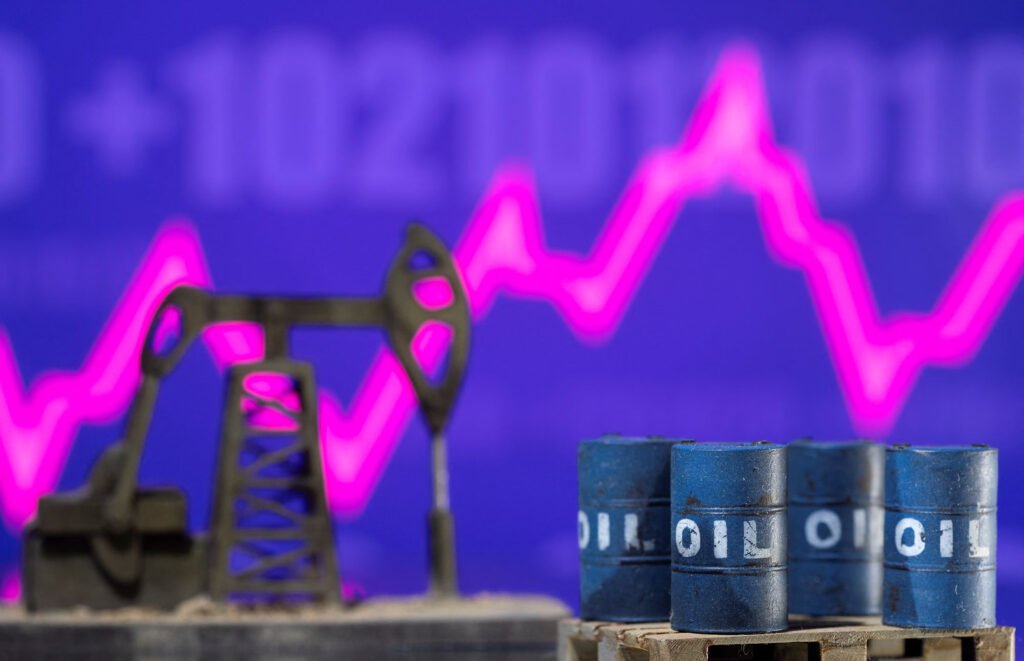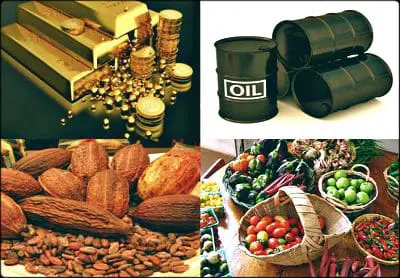Global oil prices fell again on Friday, heading for their third consecutive weekly decline, as investors reacted to forecasts of an oversupplied market and the unexpected announcement of a renewed U.S.–Russia diplomatic meeting on Ukraine.
The dual pressures of a looming supply glut and easing geopolitical tensions have sent crude markets into retreat, erasing earlier gains driven by conflict-related risk premiums.
At the time of reporting, benchmark Brent crude futures slipped 0.25% to $60.91 per barrel, while U.S. West Texas Intermediate (WTI) edged down 0.14% to $57.38, extending a week-long slide that has left both benchmarks down nearly 3%.
The decline followed Thursday’s announcement that U.S. President Donald Trump and Russian President Vladimir Putin had agreed to hold a summit in Hungary within the next two weeks to discuss the war in Ukraine.
The unexpected diplomatic move comes as the White House continues to balance support for Kyiv with broader global energy and economic priorities.

The development injected fresh uncertainty into markets that had been bracing for extended sanctions and energy supply disruptions.
Analysts suggested that if the talks signal a potential softening of U.S. policy toward Russia, oil markets could experience further downward pressure.
“Now that the two leaders are expected to meet, it could be a sign that the U.S.’s stance on Russia may ease.
“If so, that should push prices lower.”
Tamas Varga, analyst at PVM Oil Associates
Varga noted that the geopolitical premium previously built into oil prices due to Ukrainian drone strikes on Russian refineries and threats of secondary sanctions on major buyers of Russian crude particularly India and China may begin to unwind if diplomatic engagement gains traction.
“Those risks set a floor under the market, but with renewed talks on the table, that floor could quickly give way.”
Tamas Varga, analyst at PVM Oil Associates
Economic Concerns Add to Pressure

Beyond geopolitics, growing trade tensions between the U.S. and China have further dampened investor confidence.
Market participants fear that rising tariffs and political friction between the world’s two largest economies could weaken global demand for oil and other commodities.
“It just demolishes confidence.
“The more uncertainty we see in trade, the quicker the U.S. economy will feel the impact.”
Jorge Montepeque, managing director at Onyx Capital Group
Montepeque warned that a slowdown in industrial output and consumer spending in both countries could trigger a broader contraction in global energy demand.
The sentiment was compounded by fresh data from the International Energy Agency (IEA), which projected a growing global oil glut by 2026.
The agency cited sustained output growth from non-OPEC producers, including the United States and Brazil, and a slowdown in consumption as key factors shaping the outlook.
Inventory Build and Record U.S. Output

Adding to the bearish mood, new figures from the U.S. Energy Information Administration (EIA) showed a much larger-than-expected increase in crude oil inventories, signaling weakening refinery demand.
The EIA reported that U.S. crude stocks rose by 3.5 million barrels to 423.8 million barrels last week far exceeding analyst expectations for a modest 288,000-barrel rise.
The increase was attributed to seasonal autumn refinery maintenance, which has reduced utilization rates across the refining sector.
Both major oil benchmarks have endured steep declines this week, extending a trend that began in early October. On Thursday, Brent settled 1.37% lower, while WTI dropped 1.39%, marking their lowest closing levels since May 5.
The combination of easing geopolitical tensions, record U.S. production, and expectations of surplus supply has overshadowed any short-term bullish factors, such as ongoing refinery disruptions in Russia or weather-related production risks in the Gulf of Mexico.
Looking ahead, traders are closely watching the upcoming Trump–Putin meeting, which could determine the trajectory of sanctions policy and its impact on Russian oil exports.
A successful diplomatic engagement could lead to increased Russian output entering global markets, exacerbating the supply glut predicted by the IEA.
The market’s immediate focus will remain on U.S. diplomatic moves, inventory trends, and demand indicators from Asia. Meanwhile, OPEC+ nations are expected to assess the situation ahead of their next policy meeting, with some producers already hinting at potential adjustments to output targets to counter price weakness.
Despite the current downtrend, some traders believe oil’s decline may be limited by continued uncertainty surrounding global energy supply chains, particularly in Europe and Asia. However, for now, the narrative is dominated by the prospect of peace talks and a looming supply surplus.
READ ALSO: BoG’s $1.15bn FX Injection Sparks Clash with IMF and World Bank Over Cedi Stabilization























